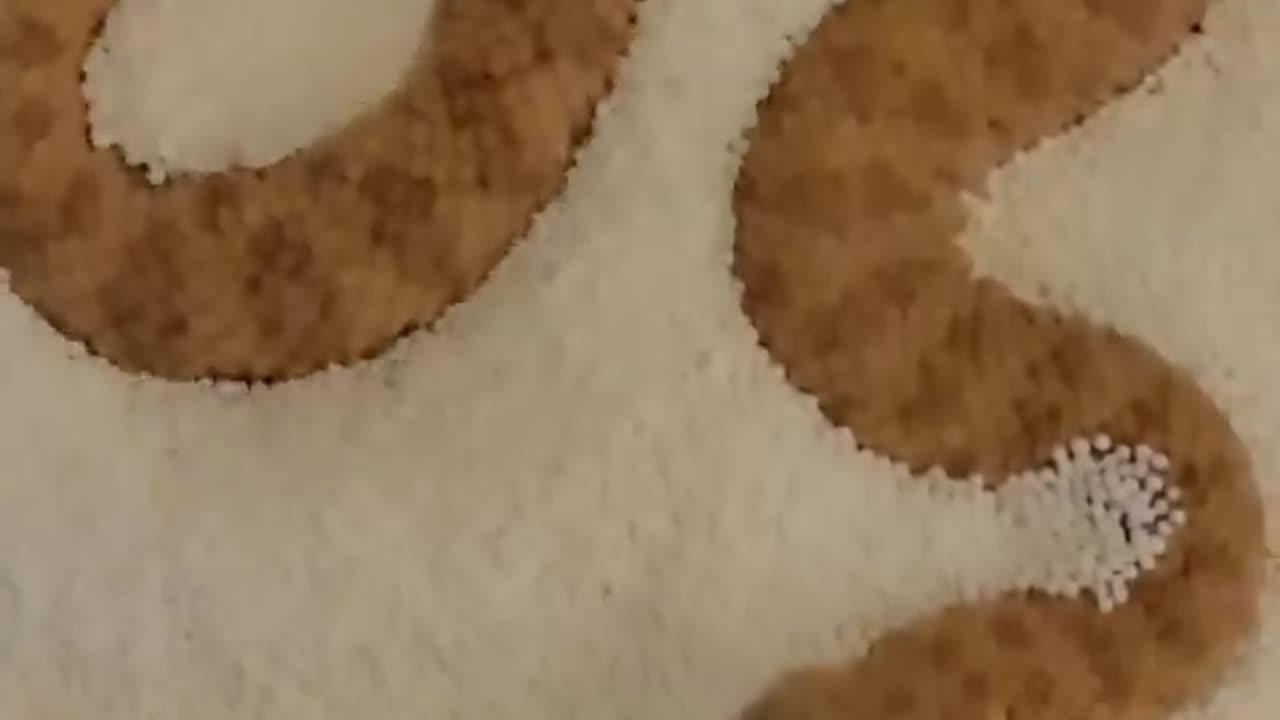Premium Only Content

Baby Sand Viper Vs Adult in sprinkles! #ThatMoment
Here are some key characteristics and information about baby sand vipers:
Size and Appearance: Baby sand vipers are typically smaller than adult snakes. Their size can vary depending on the species, but they are generally around 15-25 centimeters (6-10 inches) in length when they hatch. They have a similar appearance to adult sand vipers, including a triangular-shaped head, well-developed fangs, and a cryptic coloration that helps them blend into their sandy surroundings.
Camouflage: Baby sand vipers have evolved to blend seamlessly with the desert sands. Their coloration often includes various shades of beige, brown, or gray, which helps them remain hidden from predators and prey alike. Their scales also have a textured pattern that mimics the texture of sand.
Behavior: Like adult sand vipers, baby sand vipers are primarily ambush predators. They lie in wait, partially buried in the sand, and strike at passing prey (typically small rodents, insects, or lizards) when it comes within striking distance. Their venom is used to immobilize and digest their prey.
Venom: Baby sand vipers, like their adult counterparts, are venomous snakes. While their venom is not as potent as that of some larger viper species, it can still be dangerous to their prey. The venom helps them subdue their prey and aids in digestion.
Growth and Development: As baby sand vipers grow, they shed their skin periodically, a process known as molting. With each shed, they increase in size. The exact rate of growth and the number of times they shed can vary depending on factors such as temperature and food availability.
-
 2:48:00
2:48:00
TheSaltyCracker
9 hours agoYou're Being Hunted ReeEEStream 9-10-25
294K593 -
 13:09:56
13:09:56
LFA TV
22 hours agoBREAKING: CHARLIE KIRK ASSASSINATED - WEDNESDAY 9/10/25
378K128 -
 1:31:08
1:31:08
I_Came_With_Fire_Podcast
9 hours agoCheck Fire: God Bless Charlie Kirk
93.9K24 -
 1:13:35
1:13:35
Glenn Greenwald
11 hours agoCharlie Kirk Assassinated; NATO Alleges Russian Drones Flew Over Poland, and More | SYSTEM UPDATE #512
291K300 -
 1:46:28
1:46:28
Badlands Media
1 day agoAltered State S3 Ep. 45: The Assassination of Charlie Kirk
167K29 -
 8:56:53
8:56:53
Dr Disrespect
17 hours ago🔴LIVE - DR DISRESPECT - THE FINALS - NEW SEASON 8 LAUNCH EVENT W/ THE SHOTTY BOYS
285K11 -
 27:00
27:00
BonginoReport
12 hours agoRest In Peace Charlie Kirk - Nightly Scroll w/ Hayley Caronia (Ep.131) - 09/10/2025
265K413 -
 1:20:06
1:20:06
Kim Iversen
12 hours agoRIP Charlie Kirk: When Words Fail, They Reach for Guns
189K351 -
 2:47:04
2:47:04
DDayCobra
13 hours ago $18.41 earnedCharlie Kirk SHOT
160K63 -
 1:14:30
1:14:30
Redacted News
13 hours agoBREAKING! CHARLIE KIRK SHOT BY ASSASSIN IN UTAH, TRUMP CALLS FOR NATIONAL PRAYERS
338K535